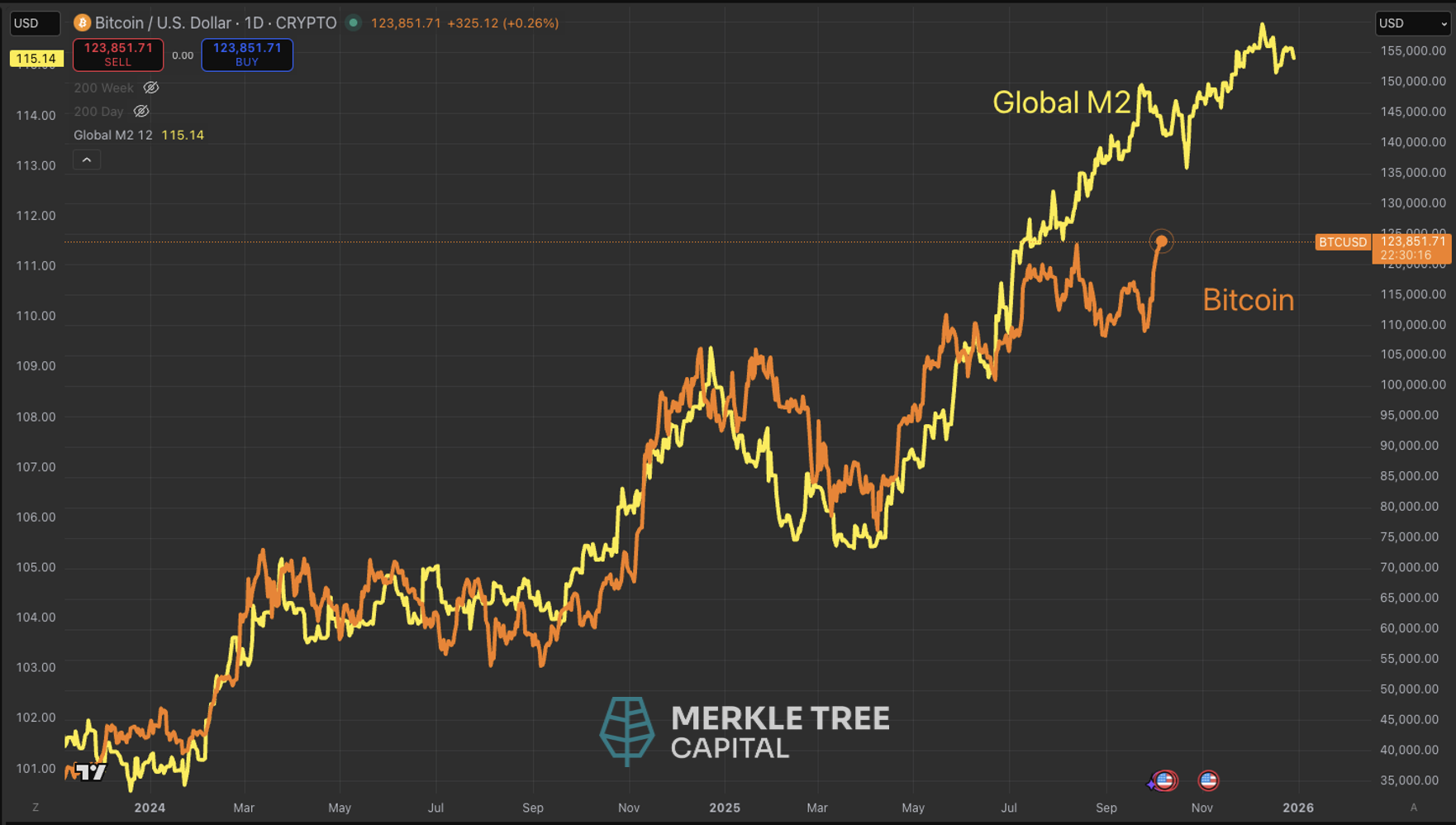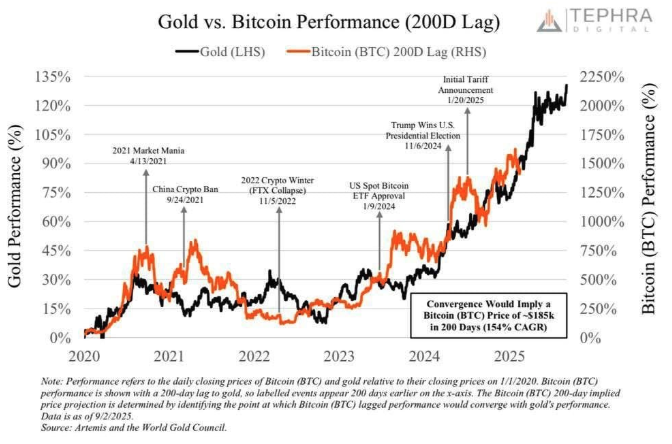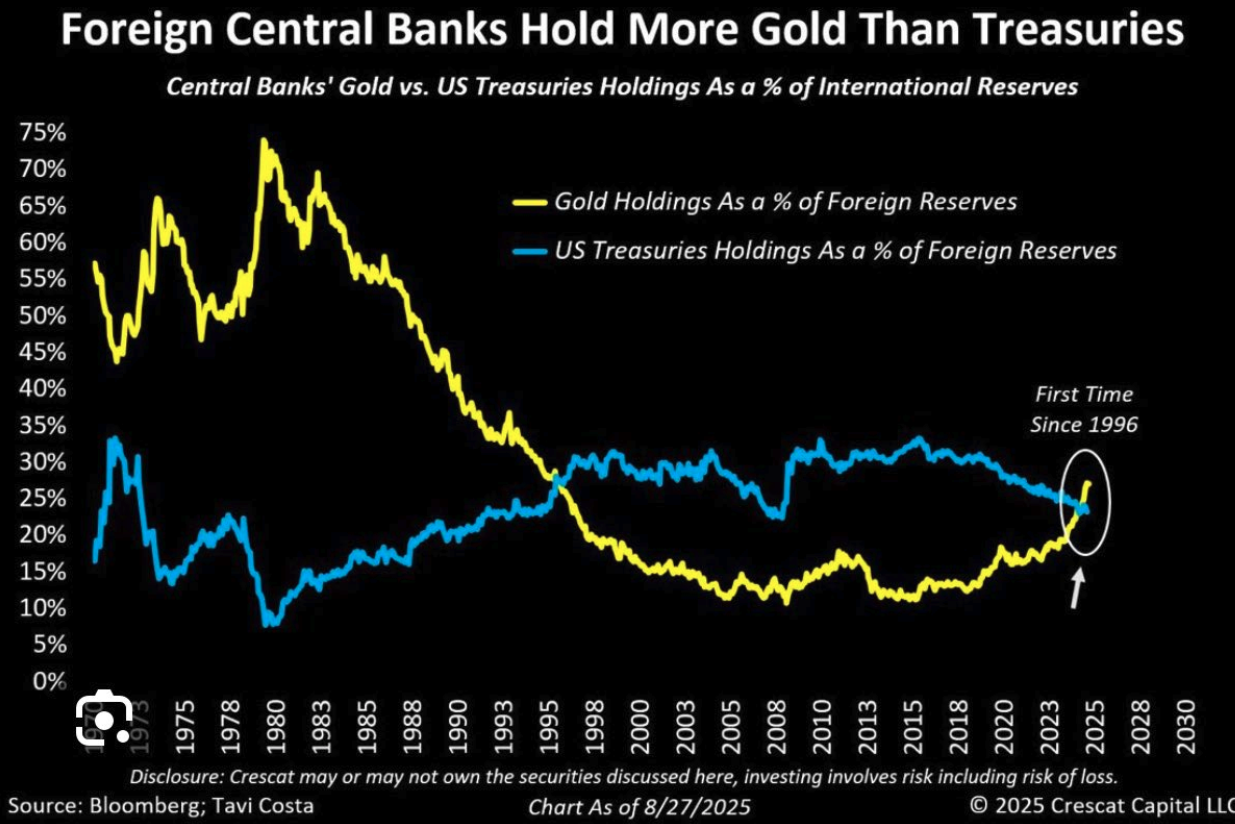Gold, Bitcoin and the debasement trade
When a bank as large and conservative as JPMorgan starts to group gold and Bitcoin together, investors should take note. In a recent research report, the firm described both assets as part of the “debasement trade.” Their analysts argued that persistent fiscal deficits, high government debt levels, and an era of monetary expansion have set the stage for investors to seek stores of value outside the traditional fiat system.
For millennia, gold has been the default hedge against such risks. What’s different now is that JPMorgan has explicitly added Bitcoin to the same category. JPM even suggests Bitcoin currently looks undervalued relative to gold, and sees a path (in their modeling) toward a striking price if the debasement narrative continues to drive capital flows.
The Debasement Trade Thesis
At its core, the debasement thesis is simple: when governments issue too much debt and central banks expand money supply to finance it, the purchasing power of currency erodes. Investors look for scarce assets not tied to any one sovereign balance sheet.
Gold has fulfilled that role for 5,000 years. Its supply grows slowly at 1-2% p.a., it carries no counterparty risk, and it is accepted worldwide. Central banks, particularly in emerging markets, have been large net buyers for years.
The 1970s should be considered as the most recent time period a debasement trade was relevant, with inflation rampant, gold returned around 30% p.a. for much of the decade while bonds and equities delivered negative real returns.
Bitcoin, while only 16 years old, was engineered with similar principles in mind. Its total supply is capped at 21 million coins, and issuance declines every four years via the halving cycle. Note a precursor to Bitcoin was called BitGold i.e. imitating gold wasn't a coincidence it is very deliberate. Gold’s scarcity is geological, Bitcoin’s is algorithmic. Both appeal to investors concerned about the debasement of fiat.
Bitcoin as a Debasement Hedge
One of the most striking data points comes from comparing Bitcoin with global M2, a broad measure of money supply. As shown below, Bitcoin’s price (lagged by 10 weeks) tracks global M2 with surprising accuracy (albeit with some recent weakness in correlation, our base case is a catch trade for BTC).

This makes intuitive sense. As central banks create more money, investors seek out for assets with fixed supply. Bitcoin, more volatile and higher beta than gold, tends to react later but with greater amplitude. In this framing, Bitcoin is the leveraged expression of the debasement trade.
Gold, the OG Debasement Hedge, Leads and Bitcoin Follows
The relationship between gold and Bitcoin is equally instructive. Historically, when gold rallies, Bitcoin often follows with a lag of several months.
This chart highlights the dynamic. Gold’s rallies in 2020 and again in 2023–2024 were echoed by strong Bitcoin moves roughly 200 days later. This is not a perfect relationship, no correlation ever is, but it reflects how investors tend to treat the two assets over a longer time period. Gold, with its central bank demand and established liquidity, moves first. Bitcoin, with its growing ETF flows and hedge fund positioning, tends to play catch-up.

JPMs analysts agree "The steep rise in the gold price over the past month has made bitcoin more attractive to investors relative to gold, especially as the bitcoin to gold volatility ratio keeps drifting lower to below 2.0. By taking into account this volatility ratio, which implies that bitcoin currently consumes 1.85 times more risk capital than gold, then mechanically the market cap of bitcoin at $2.3tr currently would have to rise by close to 42% (implying a theoretical bitcoin price of $165k)"
A Historic Turning Point in Reserves
The structural shift in global reserves adds another layer to this trade. For the first time since 1996, foreign central banks now hold more gold than U.S. Treasuries as a share of their international reserves.
This is a profound change. It signals a deliberate diversification away from U.S. sovereign debt and toward hard assets. The drivers are clear: geopolitical realignments, sanctions risk, and concern about U.S. fiscal sustainability.

While no major central bank currently holds Bitcoin, JPMorgan’s analysts note that the same forces pushing institutions toward gold could, over the next cycle, extend to digital stores of value. If even a fraction of global reserves flowed into Bitcoin, its fixed supply would magnify the price impact. Deutsche Bank went a step further suggesting BTC will be held as a reserve asset by central banks by 2030.
Implications for Investors
For portfolio construction, the question is not gold or Bitcoin. Both play complementary roles in navigating the debasement regime.
- Gold provides stability, liquidity, and deep market depth. It is the first-responder hedge.
- Bitcoin offers asymmetric upside, greater volatility, and a higher beta to the same underlying thesis.
This is why legendary macro investors, from Ray Dalio to Paul Tudor Jones and Stanley Druckenmiller, have spoken positively about holding both. In their eyes, ignoring either asset leaves a portfolio exposed to the erosion of fiat purchasing power.
The Debasement Narrative
JPMorgan’s shift in framing matters. Bitcoin received a major boost in institutional investment circles after Larry Fink framed Bitcoin as 'digital gold', we believe this framing by JPM moves the dial even further, this is the unique role it plays in your portfolio, not just an option for your ‘alternatives basket’.
Gold has just broken to new all-time highs. Central banks continue to accumulate, and there is no end in sight to further debasement. The Macro set up is clear, expect gold to continue higher and BTC to follow until there is a credible way to slow the expansion of the monetary supply.
For investors navigating an era of record deficits, monetary expansion, and geopolitical uncertainty, the 'debasement trade' is no longer a fringe idea. It is fast becoming a new and independent theme of portfolio construction.
4 topics

